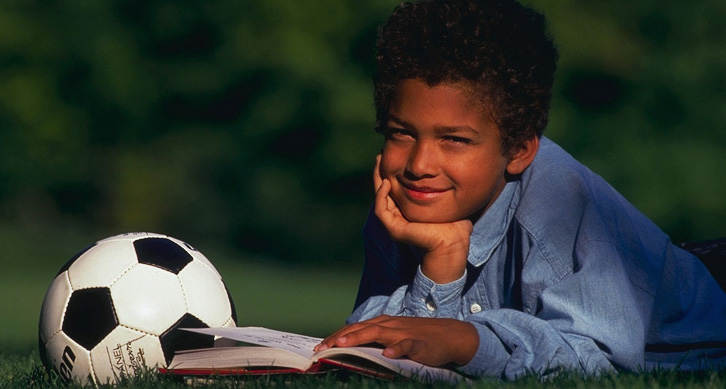The brain learns more easily when it’s having fun. So if you’ve got ‘texts for comprehension’ or texts which give you information about a subject, there are numerous things you can do in a home-schooling environment other than ‘read the text and answer the questions’.* The following work for all texts and all ages. Start by photocopying the text – and making sure you keep the original for checking.
Chop it up
Chop the text into chunks (cutting between lines of text) for children to put in the right order. They have to understand the content in order to make sense of it, and also understand a bit about how sentences are constructed. The more pieces, the more difficult the task. So if the text is worth more than a glance, start with fewer pieces, then cut those in half – and then in half again, until it’s every line (or until it stops being fun).
White (or black) out words
Whiteout words for children to complete the text. Start easy – give them the missing words out of order to choose from. Second time get them to fill in words from memory (but accept anything which makes sense); and/or white out more words. Children can check their own work – which means they look through the text again.
Share different information
If you have more than one child working on the same text, give them each different paragraphs, and they work together to complete the questions – without showing anyone else their text.
Stick the text on the wall
Just sticking the text on the wall so the child has to remember the information for the time it takes to go back to their table and write it down will help them build a memory of the information. The running around helps their learning too. Doing this with more than one child (or in teams where only one member of the team can be out of their place at one time) builds in an element of competition. Cutting the text into paragraphs and sticking them in different places on the walls adds to the challenge.
Let the child prepare the texts
If preparing all this sounds like too much hard work for you, then sometimes children can prepare the texts – for others, or for themselves for the following week. (If they ‘secretly’ try to remember the information … result!)
“I wish I had done the speed reading course earlier (when I was eight years old).” Nir, 12-year-old pupil, London
Teach them speed reading
Children will learn from written material much more quickly and easily if they learn speed reading. Start around the age of 8, once they’re reading confidently – and preferably reading independently for pleasure. Speed reading is so much more than reading more quickly (although that’s good too). Having a purpose for reading, knowing what they’re looking for (which could be answers to the questions – see above) engages the mind, speeds up the process, and makes the resulting information more memorable.
If young people are preparing for university, then using the techniques in Speed reading for Study will be invaluable for them. Spending one day previewing their reading list(s) before they start means they’ll be ahead of the game before they even get there. And all the other techniques mean they use all their study time to maximum advantage – to get good grades and still have time for fun.

Speed reading for kids
You can get the Kindle version of Speed Reading for Study. Younger children will benefit from looking at the text as they listen to the audio version of Speed Reading for Study.
*By the way, if you do have to answer questions on a text (eg for a test), it’s much quicker to read the questions first and then look for the answers in the text.
“Speed reading course with Jan was fun.” Emilia, 9-year-old girl, Copenhagen
We offer speed reading courses for children.
Do the spd rdng techniques apply to children? And ‘At what age should they start?

